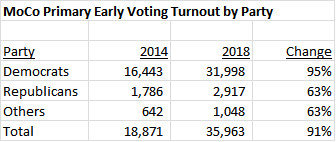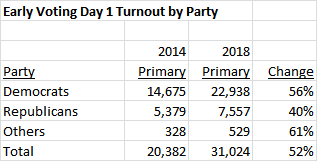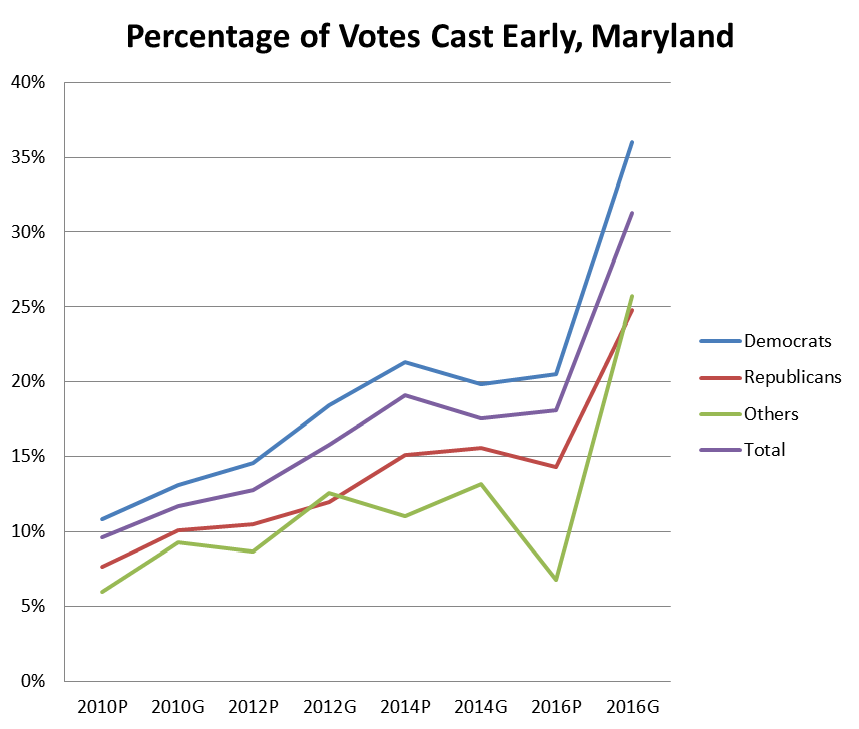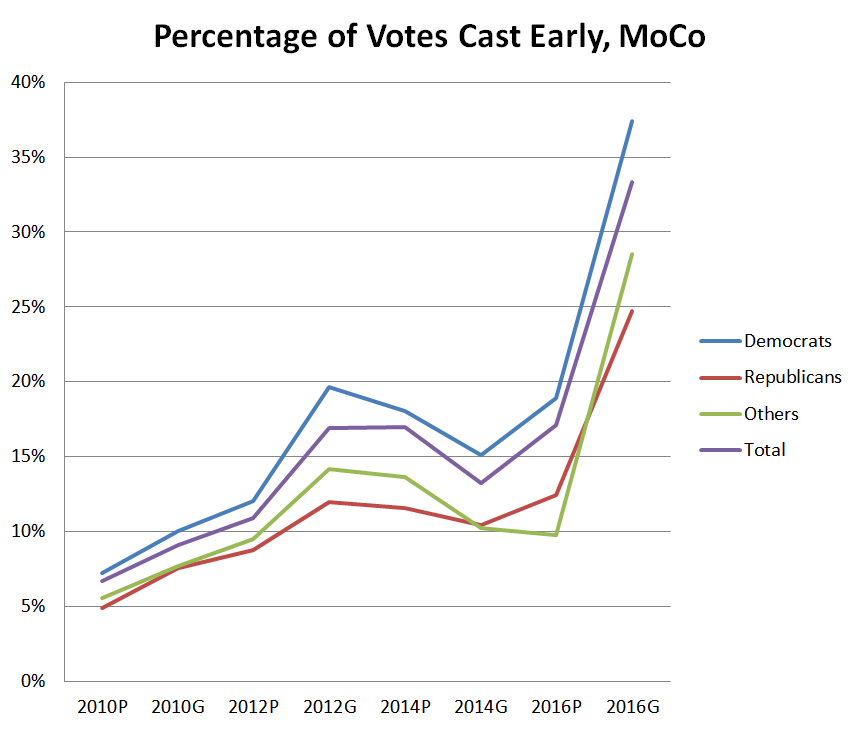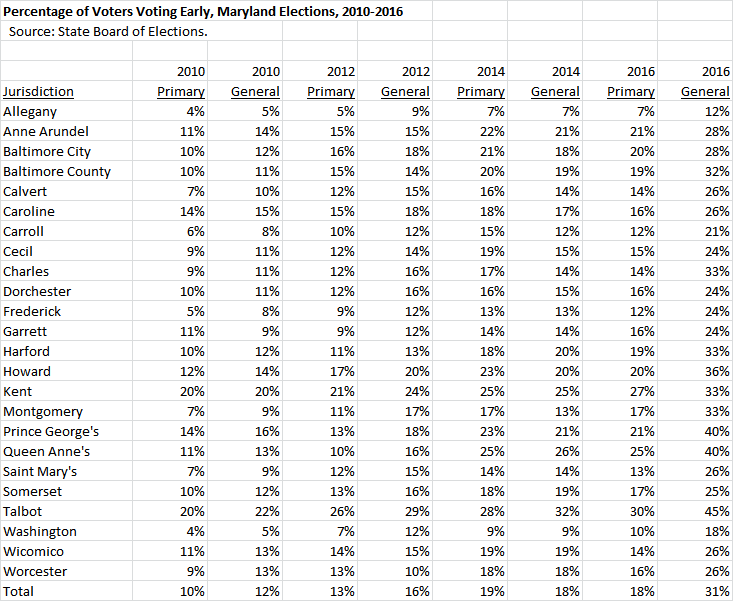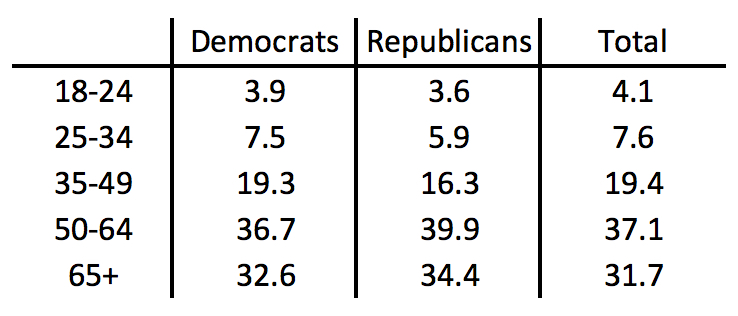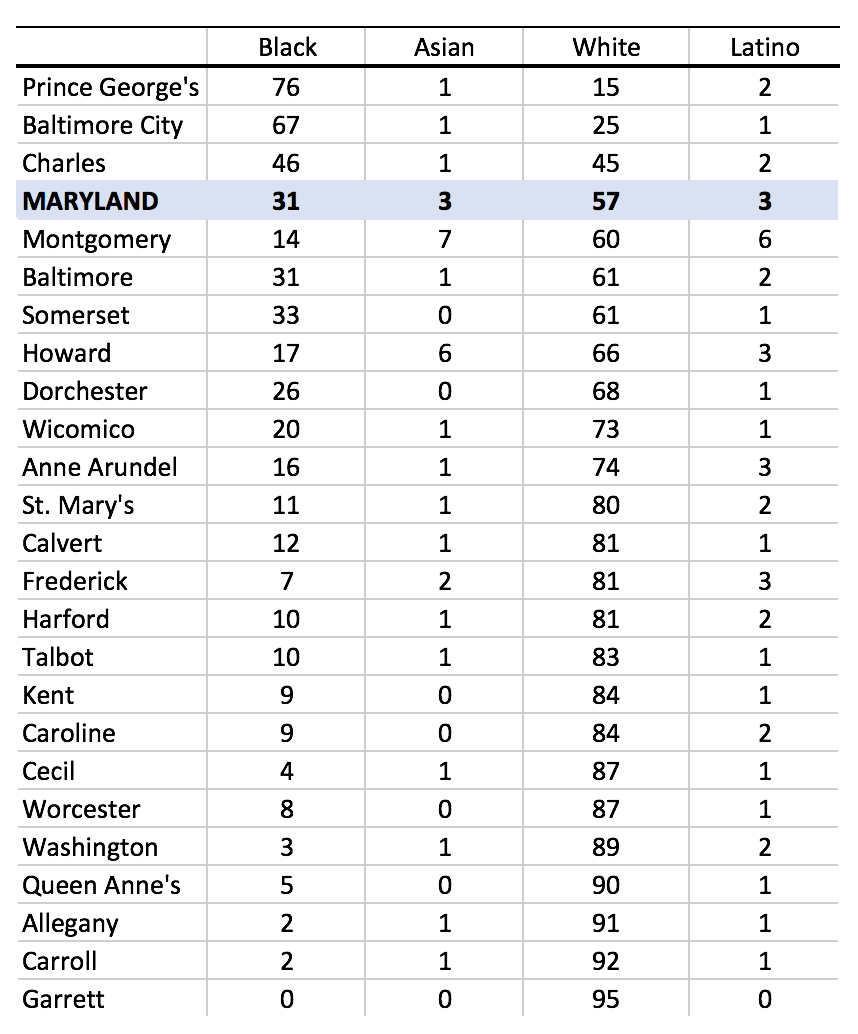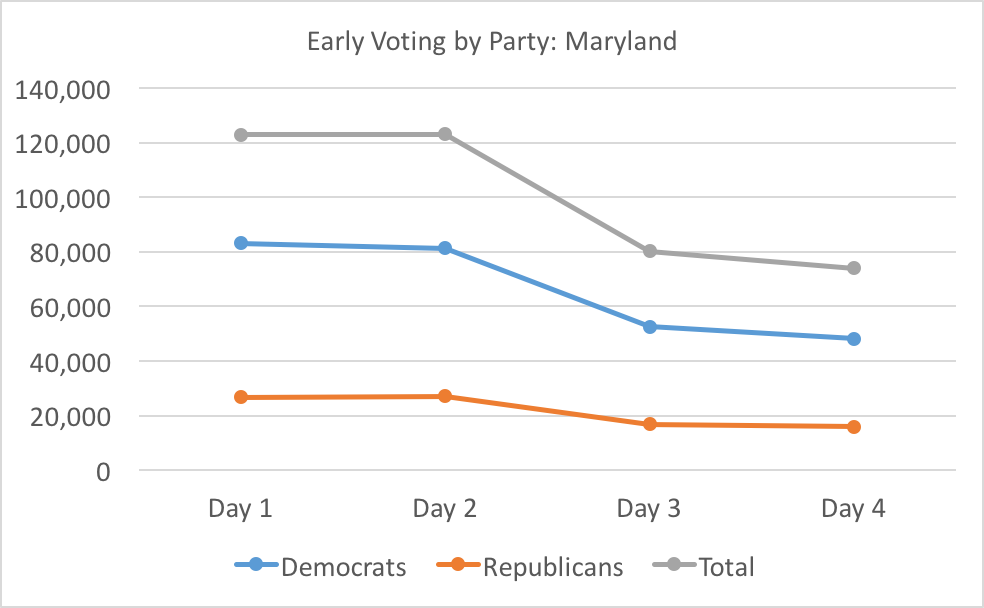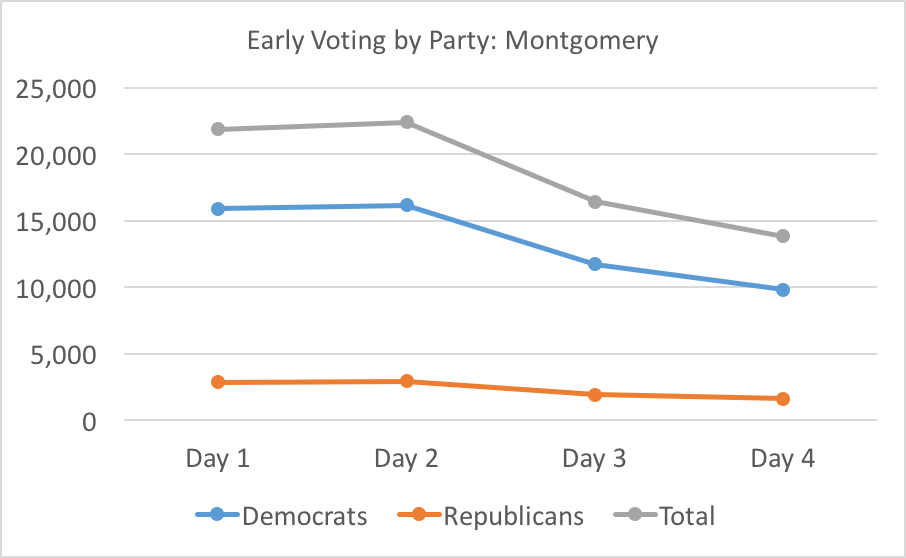By Adam Pagnucco.
Early voting wrapped up yesterday and the State Board of Elections has posted results. Folks, we can say this: a wild race just got a whole lot wilder.
First, as we saw from the first day of early voting, turnout is waaaay up. Here is the distribution by party in the 2014 and 2018 primaries.
Early voting is up for everyone but especially for Democrats.
Now here is the early voting by Congressional, State Legislative and County Council districts.
The biggest increases in early voting have occurred in State District 15, State District 16, Council District 1 and Congressional District 6. The lowest increases – by far – have occurred in State District 20 and Council District 5.
Below we show early voting by gender and age group.
Women have an edge here but not a huge one. The age group results are astounding. Turnout is up by a gigantic amount for people aged 18 through 24. It went up by the least amount for people aged 45 through 64.
Additionally, one of the campaigns analyzed the voting patterns of those who voted early for us. Roughly half the Democratic early voters had voted in at least two of the last three mid-term primaries (2006, 2010 and 2014). The other half had voted less regularly or not at all.
We draw the following tentative conclusions from this data.
1. Voters in Congressional District 6 and nearby areas turned out more strongly than the rest of the county. This might reflect the intense campaigning of the congressional candidates there and especially the massive spending by David Trone. This is good news for countywide candidates who run strong in those places.
2. Voters in District 20 – the liberal heart of MoCo that includes Takoma Park and inside-the-Beltway Silver Spring – did not turn out to the same extent. This is not a great thing for countywide candidates whose base is in that area and is especially bad for County Executive candidate Marc Elrich.
3. Tons and tons of voters who are not targeted by most campaigns – especially young people, irregular voters and new voters – have come out and are roughly equal to the super Dems. This adds an element of unpredictability to the race. For the most part, these voters are not getting overwhelmed by mail, door knocks and phone calls as are super Dems. How are they getting information on local races? Television is one source. Those campaigns with the resources for a huge target universe (like Trone and David Blair) are communicating with them while others are not. If they are using Google to research candidates, they are encountering sources like Bethesda Magazine and the blogs since few other sites write about down-ticket races. Some of them may not be voting down-ticket at all and may only be casting votes for Governor and Congress.
4. And finally, we offer our standard caveat: we don’t know if higher early voting will cannibalize from election day voting or add to it. We won’t know that until Tuesday night.
This is a helluva race, folks. Every time we think we might be starting to figure it out – BAM! – something unexpected happens. If you’re a MoCo political junkie like we are, this election is one for the ages!

